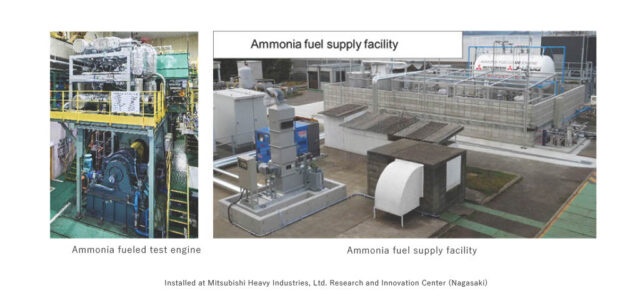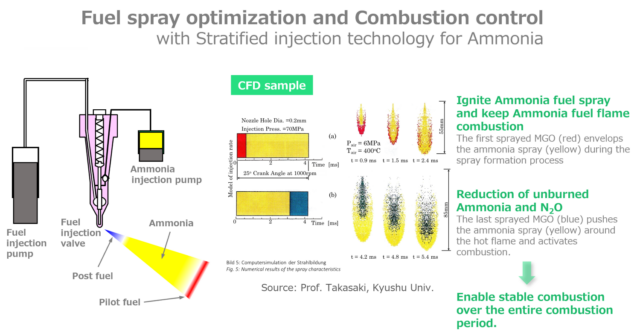J-ENG completes testing for its first ammonia-fueled marine engine
By Julian Atchison on November 29, 2024
2-stroke engine with pilot fuel, minimal nitrous oxide emissions
Japan Engine Corporation (J-ENG) announced that it has completed test operations on its low-speed, 2-stroke engine, with installation and subsequent trial operations due to begin in April 2025. The project began in May 2023 with funding from the New Energy and Industrial Technology Development Organization (NEDO).

Click to learn more. A full ammonia fuel supply system installed at J-ENG’s R&D facility in Nagasaki, Japan. Source: Japan Engine Corporation.
J-ENG reports that it achieved stable operation of the 2-stroke engine at a “high ammonia co-firing rate”, and that the generation of nitrous oxide (N2O) emissions can be suppressed to a very low level through “combustion controls”. The testing operations included successful verification of ancillary equipment, including an ammonia fuel supply, fuel switching functionality between heavy oil and ammonia, and safe handling systems. Testing operations have also given J-ENG extensive experience with fuel handling and supply. A full ammonia supply system has been installed at its R&D site in Nagasaki, built and developed by Mitsubishi Heavy Industries.
Engine destined for NYK’s midsize gas carrier

Click to expand. The J-ENG led consortium has developed a stratified injection technology for ammonia and heavy oil pilot fuel in its 2-stroke engine, optimizing stable combustion. Source: Japan Engine Corporation.
Manufacturing of the first full-scale engine based on these test operations (50cm cylinder bore) is ongoing, and the engine is expected to be ready for installation early next year. A larger, 60cm cylinder bore engine is under-development. Installation will be onboard one of the first ammonia-fueled vessels to hit the water: the NYK-led midsized gas carrier project. As for the “co-firing” described above, the consortium is targeting at least 95% ammonia combustion in this main engine and 80% or more in an auxiliary, four-stroke engine being developed by IHI. The partners have also developed a “stratified injection technology” for ammonia and pilot heavy fuel oil, optimizing stable combustion in the engine.